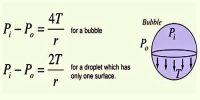The unit of work is obtained by multiplying the unit of force with unit of distance. Since the unit of force is Newton (N) and the unit of distance is meter (m) then the unit of work will be newton-meter (Nm) which is called joule. Joule is expressed by J. If a force of IN is applied on a body and the body gets a displacement of lm along the direction of force then the work done is said to be ljoule (if), i.e. 1J = 1Nm.
If the displacement takes place along the direction of force then work done is said to be work done by the force. If a duster falls on a floor from a table the work is done here by the force of gravity. If the displacement of a body takes place opposite to the direction of force then the work done is called work done against force. If a duster is lifted on the top of a table from the floor then the work is done against the force of gravity. This is because the displacement takes place opposite to the direction of the force of gravity.
Mathematical example: A man of mass 70kg climbs on a mountain of height 200m.
How much work will he do?
Given,
Mass of man, in = 70kg
Force, F = weight of the man = mg = 70kg x 9.8 ms-2 = 686 N
Displacement, S = 200 m
Work, W =?
We know,
W = Fs
= 686 N x 200 m = 1.372 x 105 J
Ans: 1.372 x 105 J














